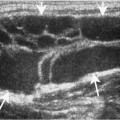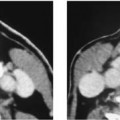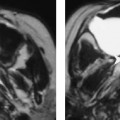Chapter 66 Laryngeal carcinoma is the most common head cancer and accounts for about 2% of all carcinomas. The true vocal cords are the most common site of laryngeal carcinomas, with the ratio of glottic carcinomas to supraglottic carcinomas being approximately 3:1. These tumors involve the right and left true vocal cords with equal incidence. True vocal cord carcinoma is directly associated with cigarette smoking. Fortunately, the risk of tobacco-related cancers appears to be reversible; the risks of ex-smokers who have abstained from smoking for > 10 years are nearly equal to those for nonsmokers. Other forms of smoking, including cigar, pipe, and marijuana, are also believed to increase the risk of developing squamous cell carcinoma (SCCA). Other risk factors include alcohol, prior irradiation, and viruses (herpes simplex, papilloma virus). Laryngeal cancer is more common in men (5–10:1) between the ages of 50 and 80. The staging of glottic carcinoma are presented in Table 66–1. Patients usually present with hoarseness. Those with advanced lesions may present with difficulty breathing and weight loss. A subset of glottic tumors are localized to the anterior commissure and are termed anterior commissure tumors. These tumors may spread along Broyle’s ligament to the laryngeal surface of the thyroid cartilage and result in early cartilage invasion (Fig. 66–1). The likelihood of nodal involvement associated with glottic carcinomas is dependent on the stage of the tumor. The incidence of nodal metastases in early T1 lesions is low (< 5%). This figure increases to approximately 20% for T3 and T4 lesions. The nodes most at risk of metastases are the internal jugular chain. Paratracheal nodes may be involved in glottic tumors that have a significant amount of subglottic spread.
Squamous Cell Carcinoma of the True Vocal Cord (Glottis)
Epidemiology
Clinical Findings
T1 | Tumor limited to vocal cord (may involve anterior or posterior commissures) with normal mobility |
T1a | Tumor limited to one vocal cord |
T1b | Tumor involves both vocal cords |









